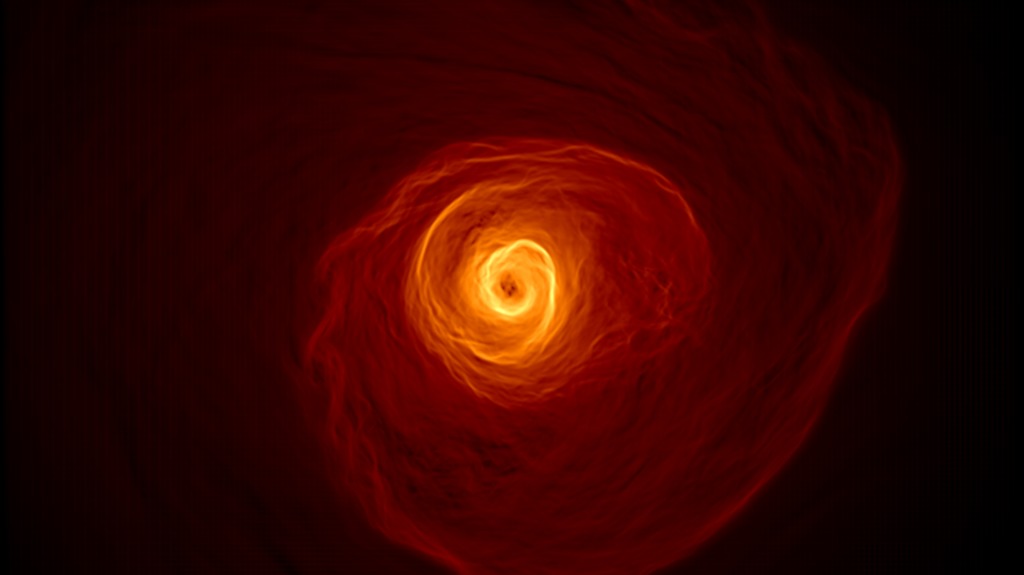Colossal Cosmic Waves

When a small galaxy cluster disturbs a larger one, giant waves emanate for millions of years.
Billions of years ago, a small galaxy made a flyby of the massive Perseus galaxy cluster. The flyby made a gravitational disturbance that caused a cosmic shock wave, which generated ripples of hot gas in Perseus roughly twice the size of our own Milky Way. NASA’s Chandra X-ray Observatory provided researchers with extremely detailed images of Perseus, which they compared to a computer simulation to better understand the initial disturbance. One feature they observed was a mysterious, curved feature known as the "bay.” According to the simulation, the smaller galaxy's flyby mixed the layers of hot and cool gas within Perseus. This caused the cooler gas to spiral outwards, producing giant waves that persist for hundreds of millions of years and forming the bay, whose “shore” is a profile view of the wave itself. Scientists were able to make extremely difficult measurements that clarified the relationship between the size of the waves and the strength of the cluster's magnetic field. Watch the video to see the giant ripples in action.
Chandra images and a computer simulation show a wave spanning 200,000 light-years roll through the Perseus galaxy cluster.

The mysterious, curved "bay" feature is highlighted in the circle of this X-ray image of the Perseus galaxy cluster.

The hot gas in the Perseus galaxy cluster is shown in this X-ray image compiled from 16 days of Chandra observations.
For More Information
See NASA.gov
Credits
Please give credit for this item to:
NASA's Goddard Space Flight Center.
Music: "The Undiscovered" from Killer Tracks.
Images courtesy of NASA Goddard Space Flight Center/Stephen Walker et al.
-
Scientist
- Stephen A. Walker (USRA)
-
Producer
- Scott Wiessinger (USRA)
-
Animator
- John ZuHone (Harvard-Smithsonian Center for Astrophysics)
-
Writers
- Francis Reddy (Syneren Technologies)
- Raleigh McElvery (Intern)
Release date
This page was originally published on Monday, July 10, 2017.
This page was last updated on Wednesday, May 3, 2023 at 1:47 PM EDT.
